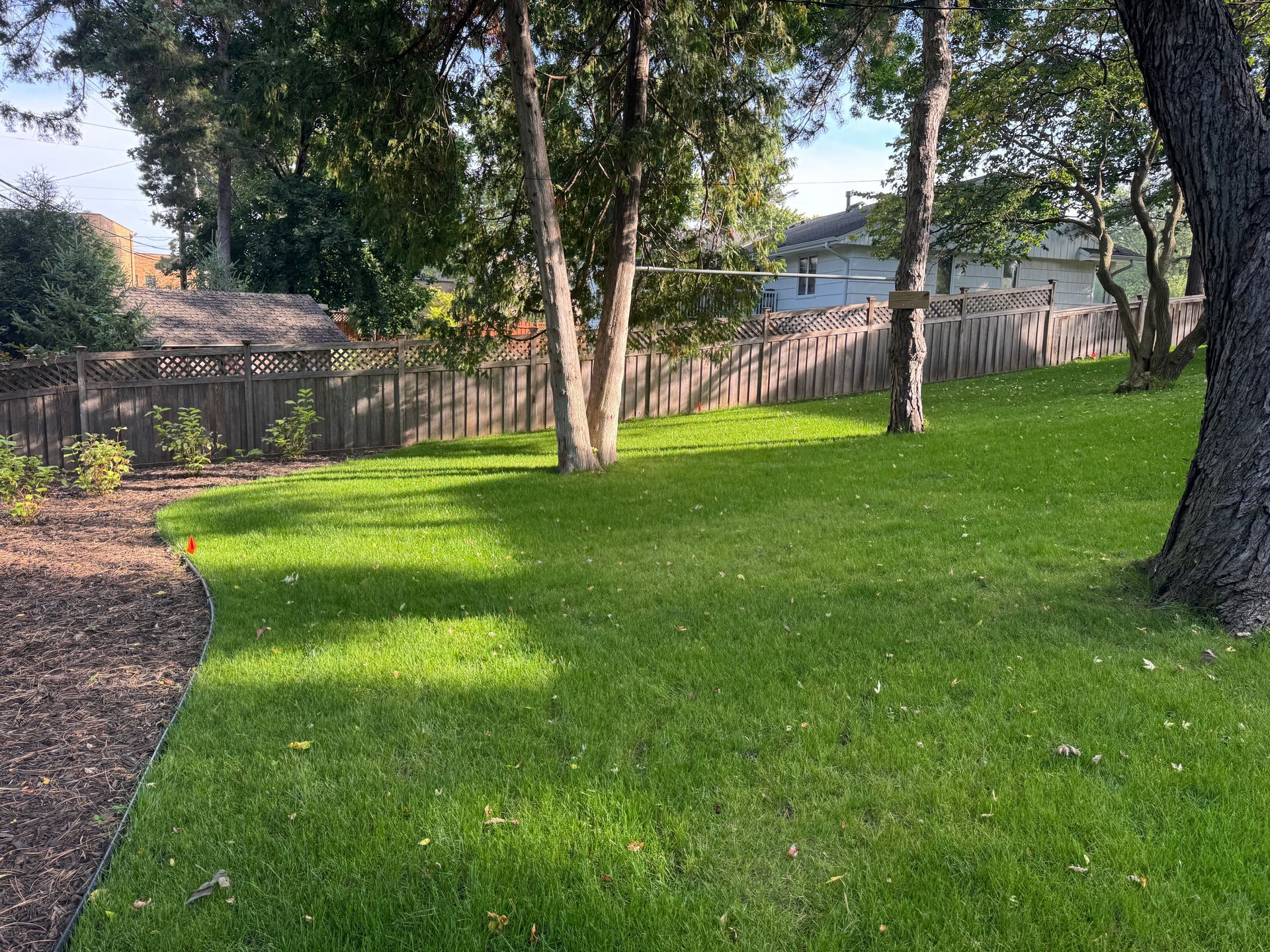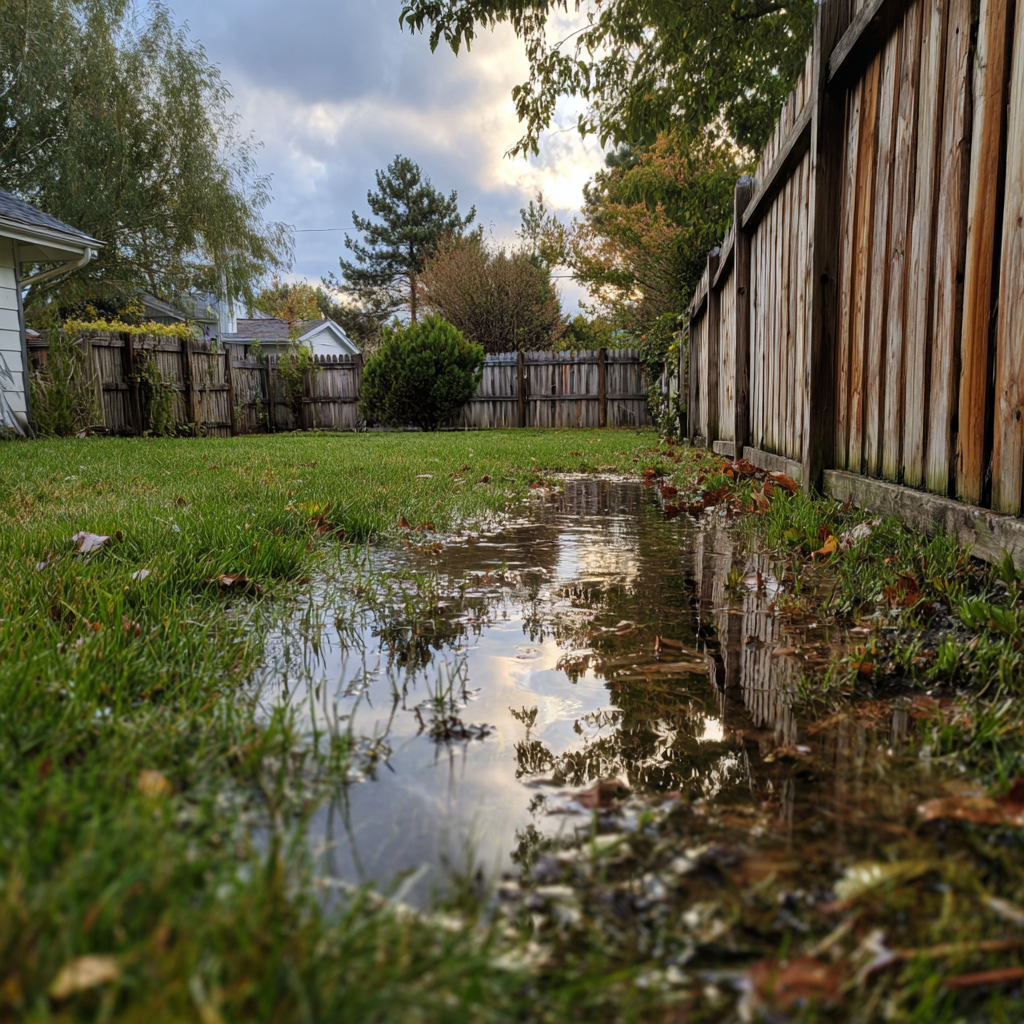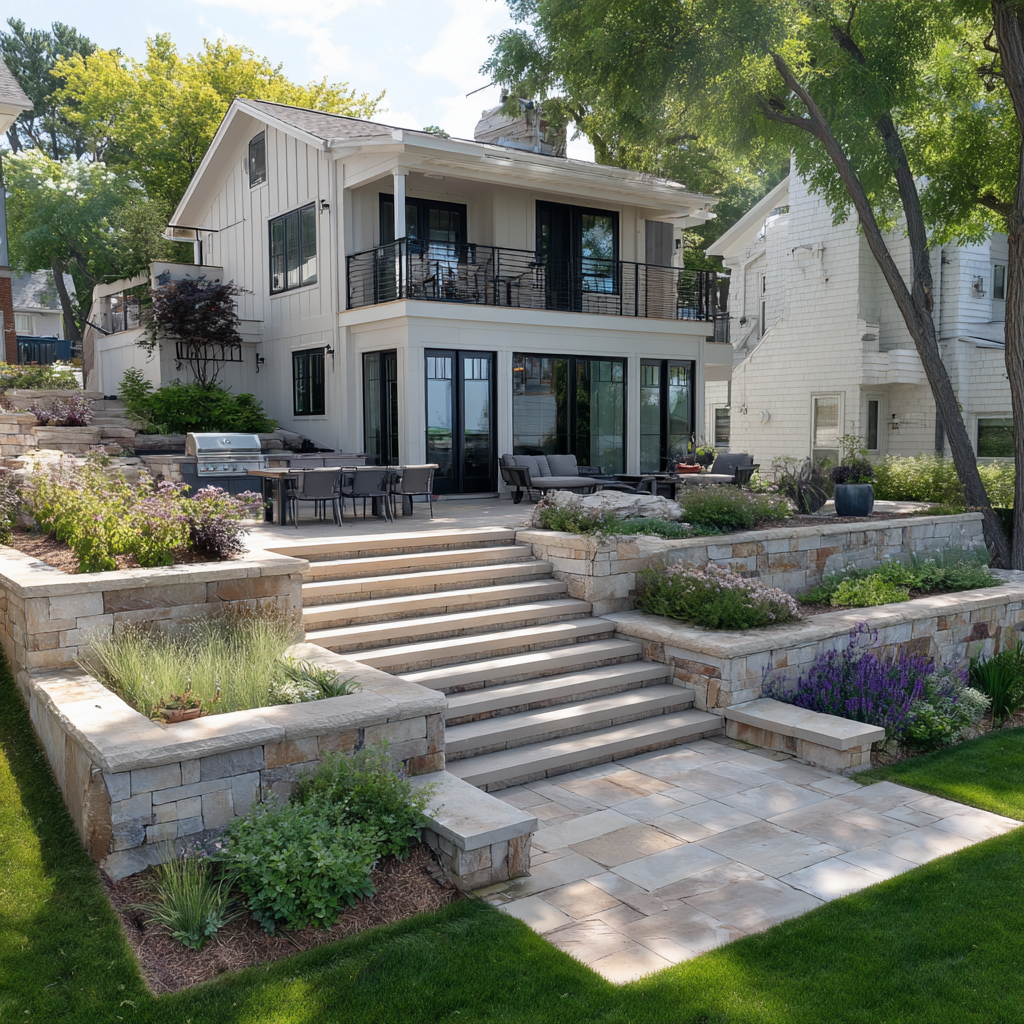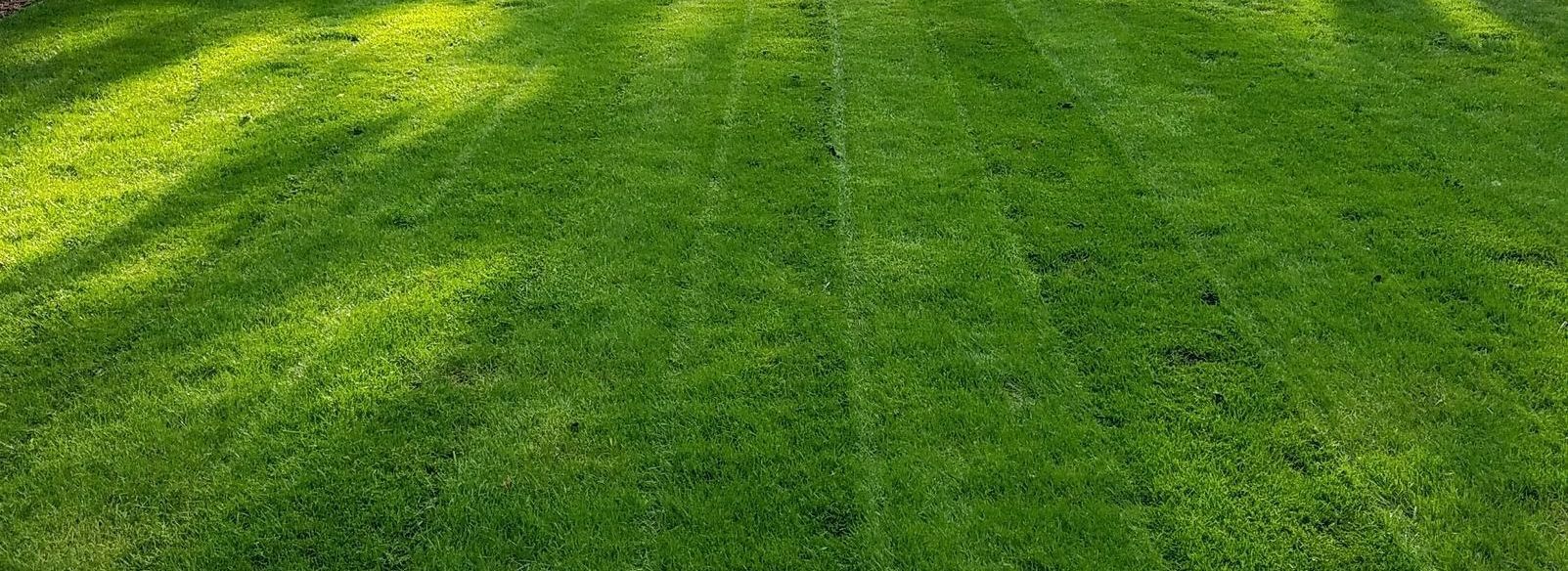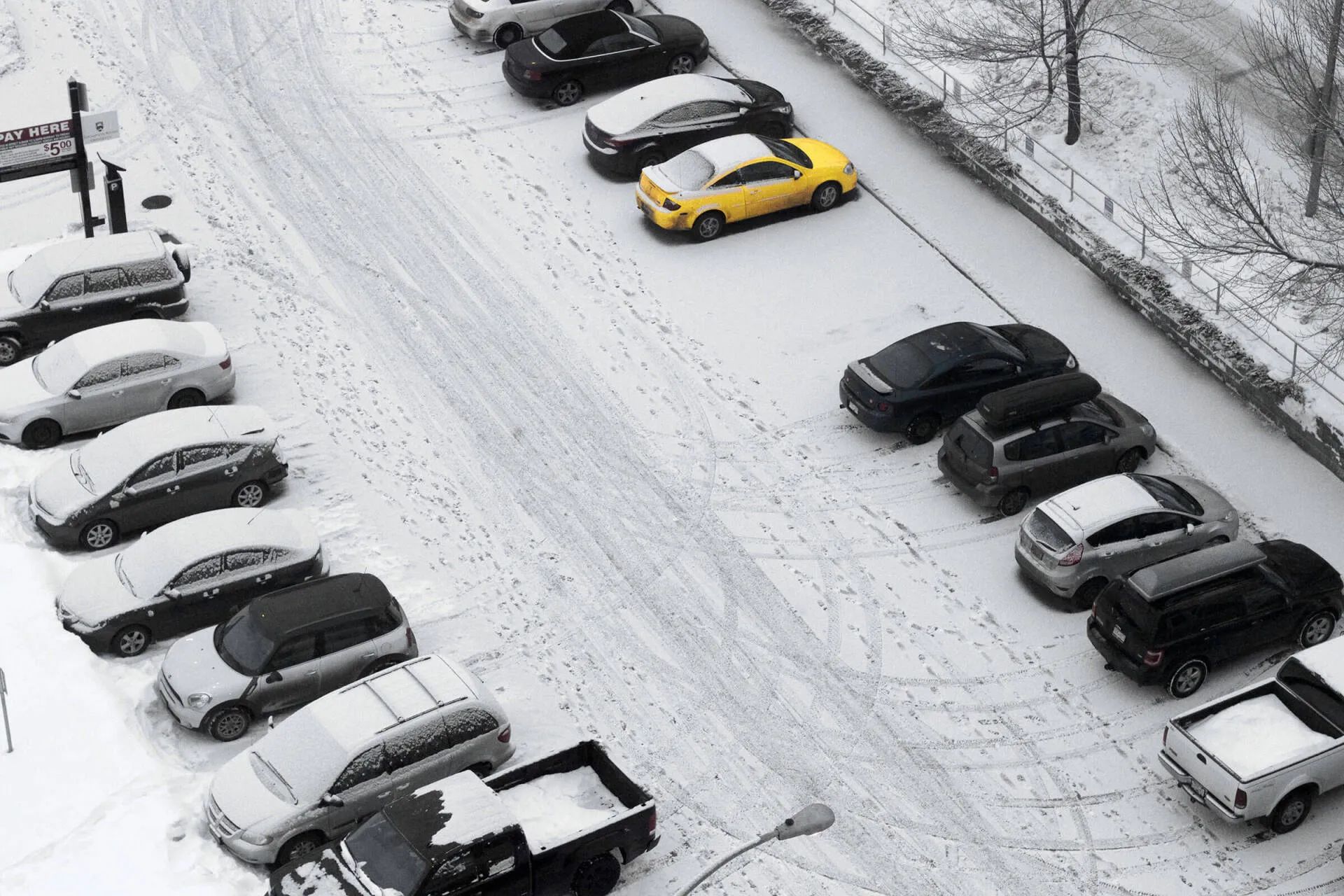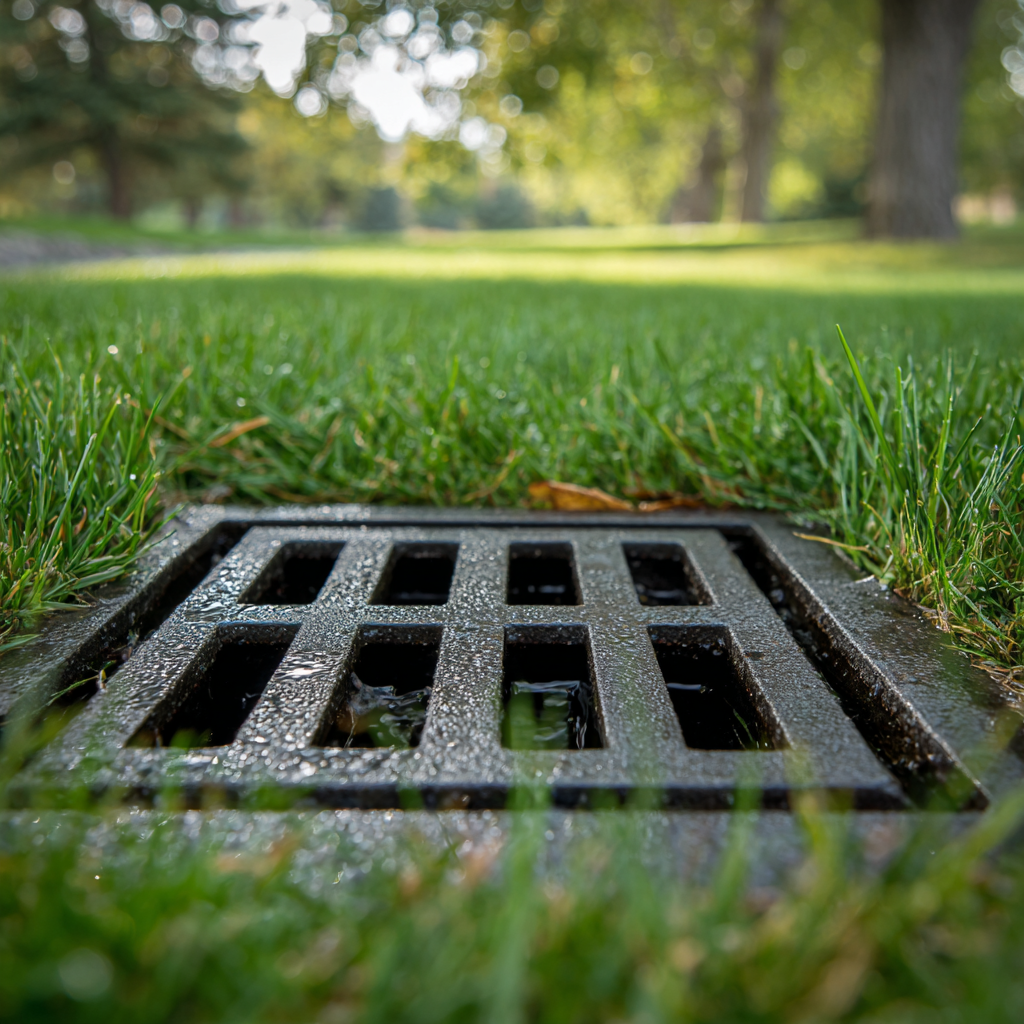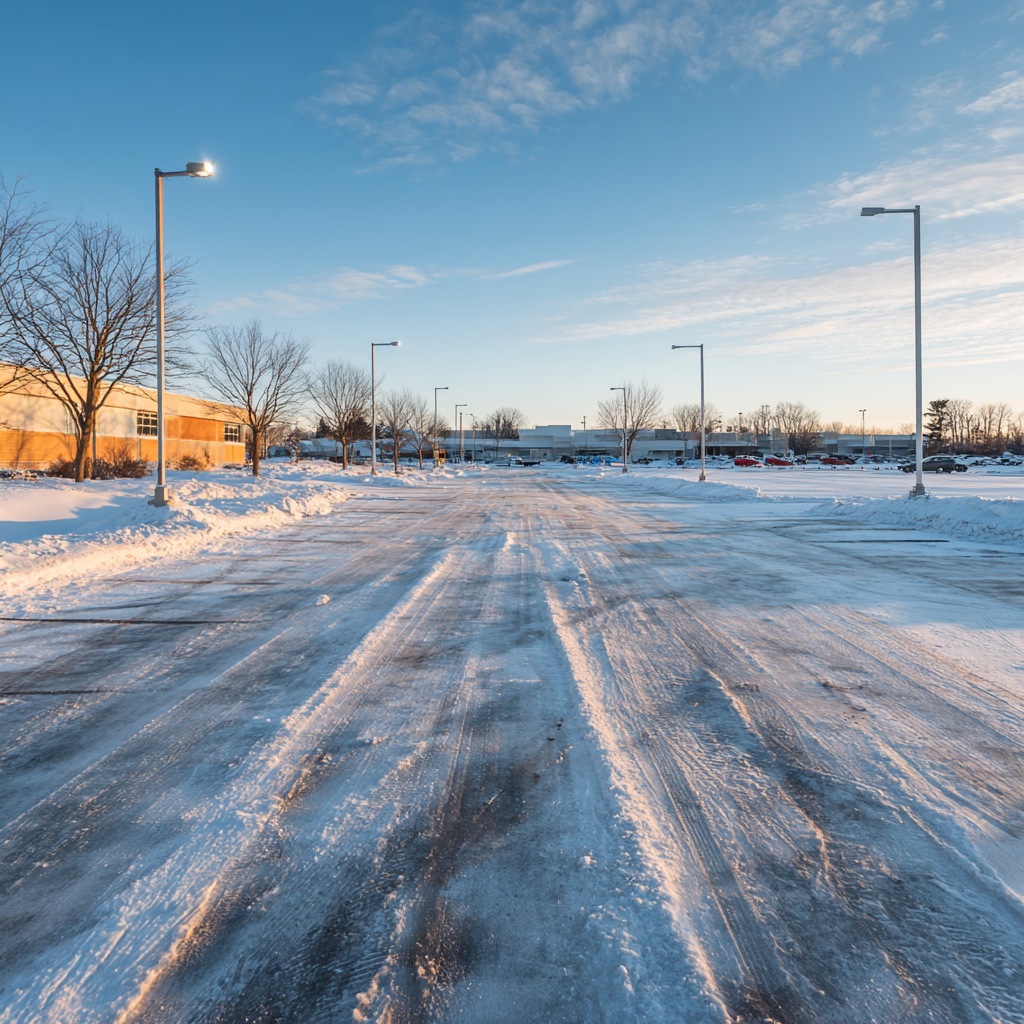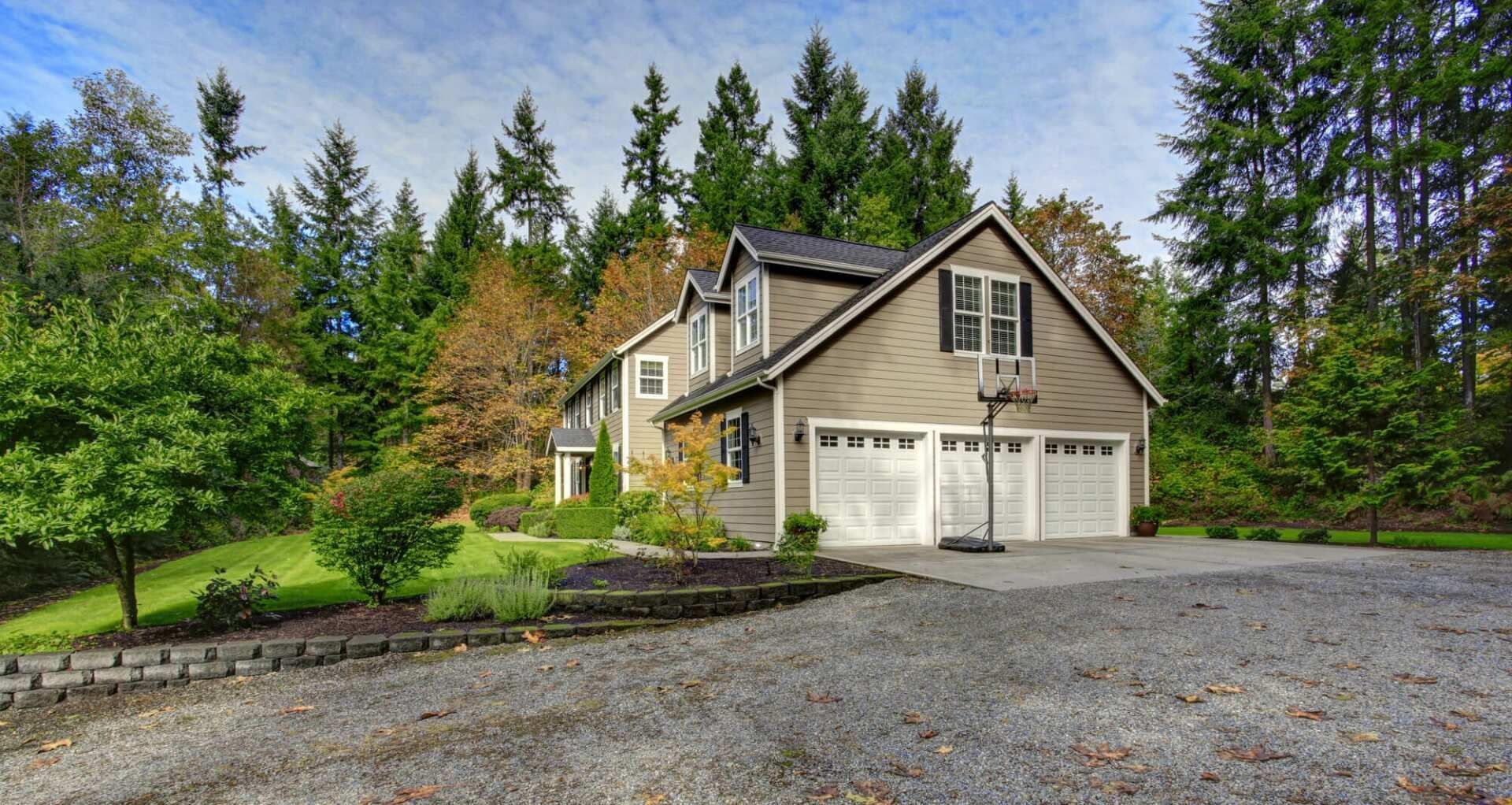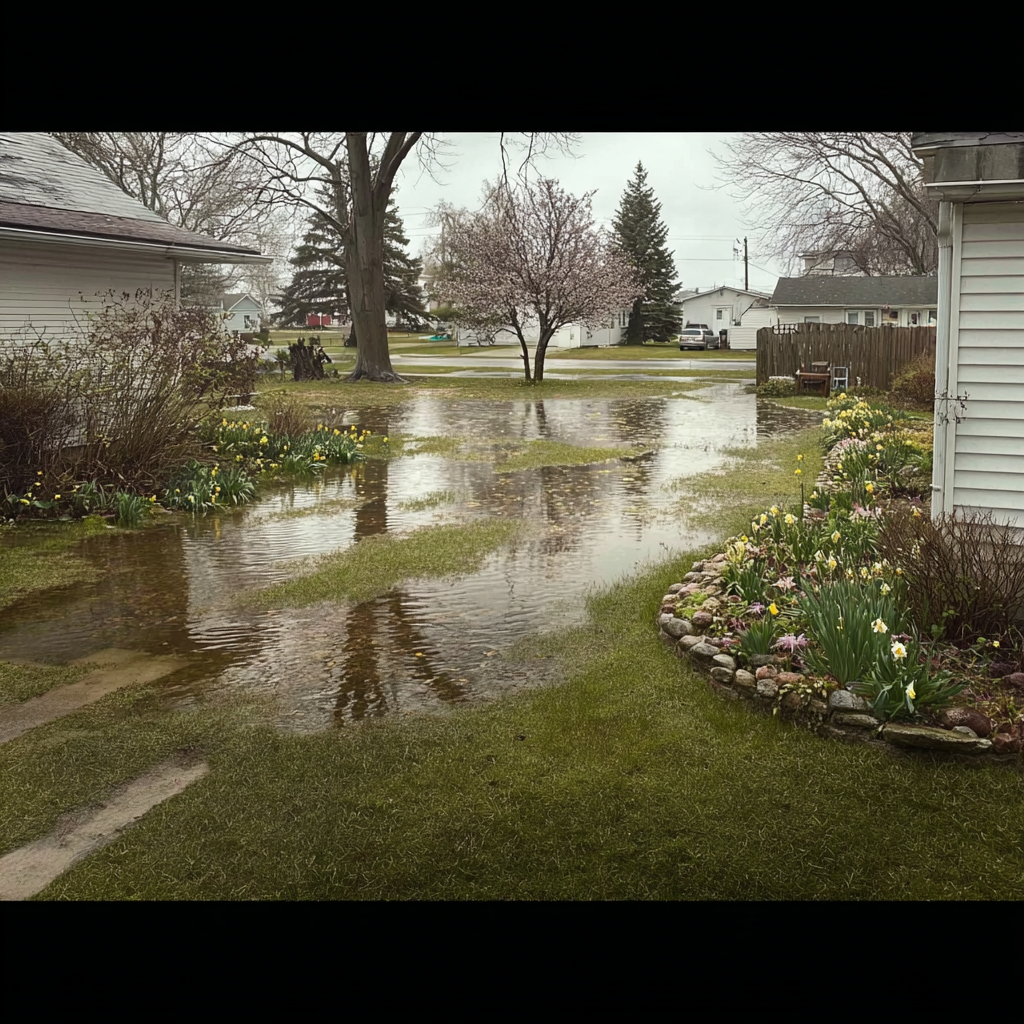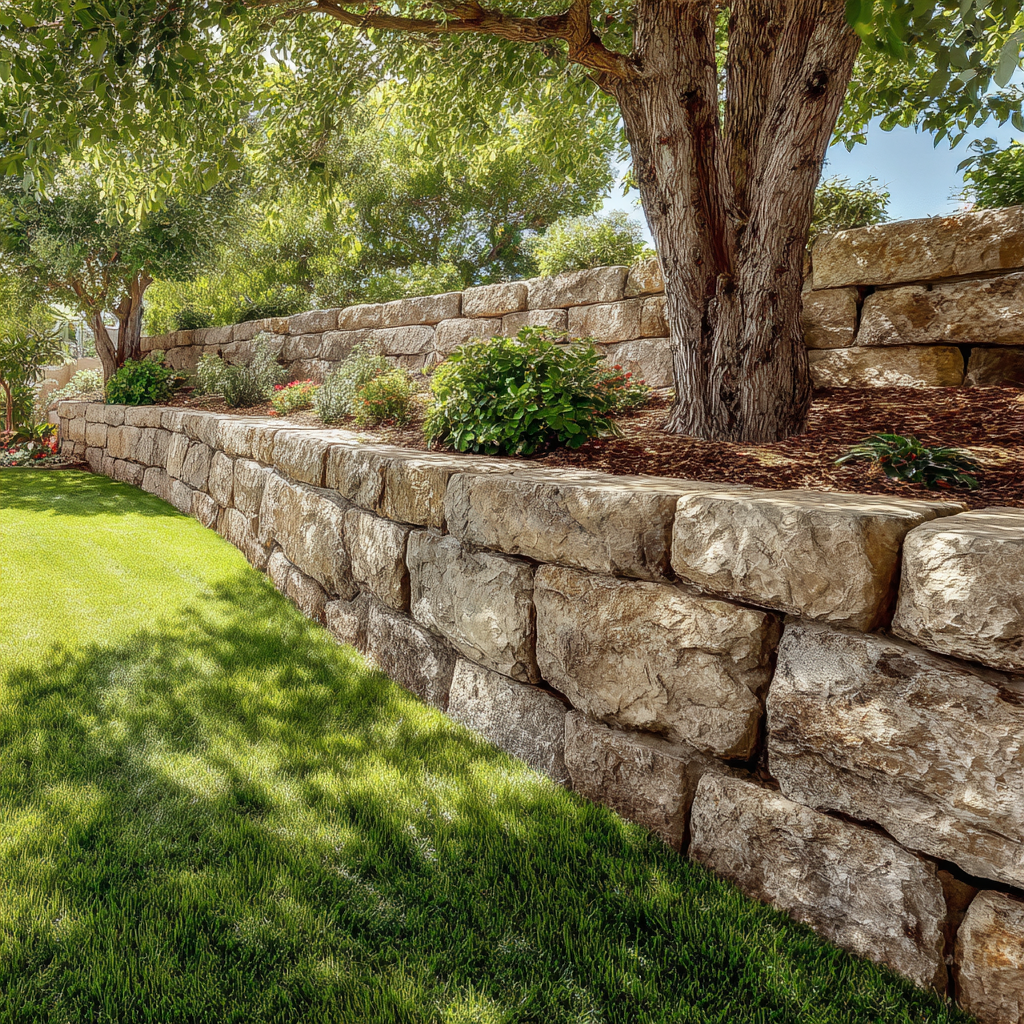DIY Yard Drainage Solutions: Save Money and Protect Your Lawn
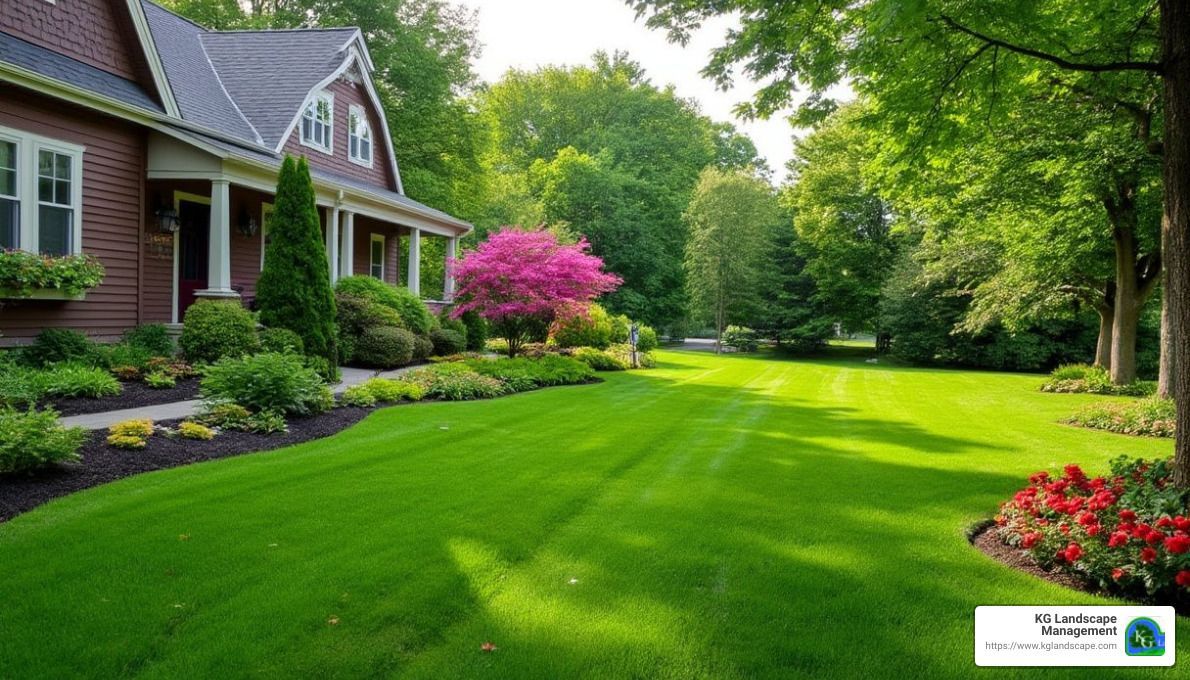
Yard drainage solutions are crucial for homeowners dealing with standing water and soggy lawns. These issues not only mar your beautiful green space but can also lead to serious problems like damaged foundations and potential pest infestations. If you're looking for quick fixes or detailed strategies to manage these water woes, here's what you can do:
Tackling these challenges will help maintain your lawn's curb appeal and protect your property's value. Stay proactive in managing water flow, and you’ll save yourself both time and money.
These common causes of yard drainage problems may seem overwhelming, but recognizing them is the first step to finding effective yard drainage solutions . In the next section, we'll explore DIY methods to tackle these issues head-on.
Pro Tip: Before adding soil, check for any foundation damage. Water can seep into the dirt and worsen existing issues.
Implementing these DIY strategies can significantly improve your yard's drainage. However, if these solutions don't fully address your issues, advanced DIY methods might be necessary. Let's explore those next.
These advanced solutions can significantly improve your yard's drainage capabilities. If these methods still don't resolve your issues, it might be time to consider professional assistance. Let's explore when to call in the experts next.
Why Use Them: They prevent water from pooling on flat surfaces, which can cause damage over time. Installation: Professionals install these drains by cutting into the surface and embedding the channels. This ensures a seamless look and efficient water flow.
Why Use Them: They prevent flooding by channeling water through underground pipes to a safe discharge point.
Installation: Experts will dig a hole and set the basin, connecting it to a network of pipes that lead away from your property.
Why Use Them: They are ideal for managing large volumes of water without causing surface erosion. Installation: Professionals dig a deep pit, line it with filtration fabric, and fill it with rocks. The well is then connected to other drainage systems like French drains.
Why Use It: Proper grading prevents water from pooling around your foundation, reducing the risk of basement leaks and structural damage.
Process: Experts use heavy machinery to move soil, ensuring the correct slope is achieved for optimal drainage.
Services Offered: From designing drainage systems to implementing advanced solutions like channel drains and dry wells , they handle it all. Their team ensures that your yard not only drains properly but also looks beautiful.
Professional help can be crucial for complex drainage issues. If DIY methods aren't cutting it, consider reaching out to experts for a lasting solution.
Next, we'll address some frequently asked questions about yard drainage solutions to help you make informed decisions.
Next, consider amending the soil. If your soil is heavy clay or compacted, mix in organic material like compost to improve its drainage capability.
For more severe issues, regrading your yard might be necessary. This involves reshaping the land to create a slope that directs water away from your home. A slope of about 2-3 inches every 10 feet is ideal.
Installing a French drain is another effective solution. A French drain is a trench filled with gravel and a perforated pipe that redirects water away from problem areas. It's particularly useful for dealing with standing water or soggy spots.
A swale is a shallow, grassy channel that guides water away from wet areas. It’s simple and blends naturally with your landscaping.
For more persistent water, installing a French drain can be beneficial. The gravel and pipe system efficiently channels water away from the wet area.
Catch basins are another option. These are like mini storm drains that collect water and move it through underground pipes to a safe discharge location.
Consider extending your downspouts to direct roof runoff away from your wet area. This simple adjustment can significantly reduce water accumulation.
Installing French drains is another effective method. These systems capture and redirect water using a trench filled with gravel and a pipe.
Catch basins are useful for collecting and diverting large amounts of water. They connect to underground pipes that carry the water away from your property.
For roof runoff, consider using downspout extensions. These direct water from your gutters to a safer discharge point, reducing the risk of pooling near your foundation.
If you're dealing with significant water flow, sump pump extensions can help. They move water from your sump pump discharge line further away from your home, preventing water from returning to your yard.
Implementing the right yard drainage solutions is key to preventing these problems. Simple DIY methods like aerating your lawn or extending downspouts can make a big difference. For more challenging issues, advanced techniques such as installing French drains or building dry wells can provide long-term relief.
However, sometimes professional help is necessary, especially for complex drainage problems. That's where we come in. At KG Landscape Management, we offer expert solutions custom to your specific needs. Our team is dedicated to delivering high-quality, detail-oriented work to ensure your yard remains dry and beautiful. Don't let drainage issues compromise your property. Contact us today to learn more about our outdoor drainage solutions and protect your home from water damage.
- Identify pooling spots and use swales or French drains to direct water away.
- Aerate compacted soil to improve absorption.
- Extend downspouts to redirect rainwater further from the house.
- Create rain gardens filled with water-loving plants to naturally store excess water.
Tackling these challenges will help maintain your lawn's curb appeal and protect your property's value. Stay proactive in managing water flow, and you’ll save yourself both time and money.
Common Causes of Yard Drainage Problems
Understanding the root cause of your yard's drainage issues is the first step in finding effective solutions. Let's explore the most common culprits:Yard Slope
Problem: A poorly graded yard can lead to water pooling in unwanted areas. Ideally, your yard should slope away from your home to direct water away from the foundation. Signs: Look for large puddles forming in specific spots. You might also notice brown patches of grass or soggy soil. Consequences of Ignoring: If left unaddressed, improper yard slope can cause foundation damage and mold growth.Impacted Soil
Problem: Construction activities, like installing a pool, can compact soil, making it difficult for water to drain. Hardpan clay soil is particularly notorious for retaining moisture. Signs: Hard, dense soil and water pooling in areas where projects were recently completed are telltale signs. Consequences of Ignoring: You risk root rot, mold growth, and erosion if impacted soil isn't remedied.Short Gutter Downspout
Problem: Downspouts that are too short can cause water to pool near the foundation, leading to serious structural issues. Signs: Noticeable puddles forming directly under the downspout. Consequences of Ignoring: Potential for foundation damage, basement flooding, and mold growth.Barriers Like Sidewalks and Rocks
Problem: Sidewalks, walkways, and rocks can act as barriers, preventing water from flowing away from your yard. Signs: Standing water in low spots near these barriers. Consequences of Ignoring: Erosion, mosquito attraction, and potential foundation damage.Runoff Erosion
Problem: Stormwater runoff can erode topsoil, leaving compacted dirt that absorbs water poorly. Signs: Look for thin, patchy grass areas and exposed tree roots. Consequences of Ignoring: Damaged plant beds and increased risk of foundation damage.Broken Water or Sewer Lines
Problem: Leaking water lines can saturate the soil, leading to water accumulation and drainage issues. Signs: Standing water near septic tanks or unexpected wet areas in the yard. Consequences of Ignoring: Persistent soggy areas and potential property damage.These common causes of yard drainage problems may seem overwhelming, but recognizing them is the first step to finding effective yard drainage solutions . In the next section, we'll explore DIY methods to tackle these issues head-on.
DIY Yard Drainage Solutions
Tackling yard drainage issues yourself can be both cost-effective and satisfying. Let's explore some practical yard drainage solutions you can implement today.Aerate Lawns
Why: Aerating your lawn helps break up compacted soil, allowing water to penetrate more easily. How: Use a lawn aerator, which you can rent from a local home improvement store, to create small holes in your lawn. This improves the soil's ability to absorb water, reducing runoff and pooling.Add More Dirt
Why: If you have low spots where water collects, adding dirt can help. How: Spread topsoil over these areas and rake it in. Make sure your yard slopes away from your house to direct water away from the foundation.Pro Tip: Before adding soil, check for any foundation damage. Water can seep into the dirt and worsen existing issues.
Extend Downspouts
Why: Short downspouts can cause water to pool near your home's foundation. How: Attach extensions to your downspouts to direct water further away. Aim them towards a safe drainage area, like a storm drain, to prevent water from returning to your yard.Remove Large Rocks
Why: Rocks and other barriers can prevent water from draining properly. How: Relocate or remove rocks that block water flow. Ensure rainwater has a clear path to exit your yard.Plant Water-Hungry Plants
Why: Some plants thrive on excess moisture and can help absorb water. How: Consider planting willows, red maples, or primrose in areas prone to pooling. These plants can help reduce standing water while adding beauty to your yard.Implementing these DIY strategies can significantly improve your yard's drainage. However, if these solutions don't fully address your issues, advanced DIY methods might be necessary. Let's explore those next.
Advanced DIY Yard Drainage Solutions
When basic measures aren't enough, it's time to consider more advanced DIY yard drainage solutions. These methods require a bit more effort but can effectively manage water issues and improve your landscape.Dig a Creek Bed
Why: A creek bed can redirect water and add a natural aesthetic to your yard. How:- Plan the Path: Use stakes to outline where you want the creek bed.
- Excavate: Dig a trench with a gradual slope (1 inch per 10 feet).
- Layer: Cover the trench with landscape fabric and add small rocks.
- Test and Plant: Run water to ensure proper flow. Add plants for decoration.
Construct a Rain Garden
Why: Rain gardens capture runoff and reduce flooding with the help of water-loving plants. How:- Select Location: Choose a low area or connect it to a downspout.
- Test Drainage: Dig a small hole, fill it with water, and observe the drainage speed.
- Dig and Layer: Dig the garden, layer with a mix of soil and gravel.
- Plant: Add plants like hostas and ferns that thrive in wet conditions.
Install a French Drain
Why: French drains efficiently channel water away from problem areas. How:- Plan the Path: Mark the trench path with stakes.
- Dig: Excavate a trench at least 8 inches deep and wide.
- Line and Lay: Line with landscape fabric, add gravel, and place a perforated pipe.
- Backfill: Cover with gravel and replace topsoil and grass.
Build a Dry Well
Why: Dry wells collect and disperse water underground, preventing surface pooling. How:- Choose Location: Ideally at the end of a creek bed or French drain.
- Excavate: Dig a deep hole for the dry well.
- Line and Fill: Line with landscape fabric and fill with rocks.
- Cover: Place a lid or cover with soil and plant grass or ground cover.
Regrade Your Yard
Why: Proper grading directs water away from your house, preventing foundation issues. How:- Assess Slope: Check if your yard slopes away from your home.
- Add Soil: Add soil to low spots and create a gentle slope.
- Compact and Seed: Compact the soil and plant grass to stabilize the area.
These advanced solutions can significantly improve your yard's drainage capabilities. If these methods still don't resolve your issues, it might be time to consider professional assistance. Let's explore when to call in the experts next.
Yard Drainage Solutions: Professional Help
Sometimes, yard drainage solutions require more than just a DIY approach. When water problems persist, it might be time to call in the professionals. Here are some advanced solutions that experts can provide:Channel Drains
What They Are: Channel drains are long, narrow grates that collect and redirect water away from areas like driveways and patios.Why Use Them: They prevent water from pooling on flat surfaces, which can cause damage over time. Installation: Professionals install these drains by cutting into the surface and embedding the channels. This ensures a seamless look and efficient water flow.
Yard Drains
What They Are: Yard drains, also known as catch basins, are like mini storm drains placed in low areas of your yard to collect excess water.Why Use Them: They prevent flooding by channeling water through underground pipes to a safe discharge point.
Installation: Experts will dig a hole and set the basin, connecting it to a network of pipes that lead away from your property.
Dry Wells
What They Are: Dry wells are underground structures that collect and gradually disperse water into the surrounding soil.Why Use Them: They are ideal for managing large volumes of water without causing surface erosion. Installation: Professionals dig a deep pit, line it with filtration fabric, and fill it with rocks. The well is then connected to other drainage systems like French drains.
Regrading
What It Is: Regrading involves reshaping the land to create a natural slope that directs water away from your home.Why Use It: Proper grading prevents water from pooling around your foundation, reducing the risk of basement leaks and structural damage.
Process: Experts use heavy machinery to move soil, ensuring the correct slope is achieved for optimal drainage.
KG Landscape Management
Why Choose Them: With expertise in both landscaping and drainage, KG Landscape Management offers comprehensive solutions custom to your yard's needs.Services Offered: From designing drainage systems to implementing advanced solutions like channel drains and dry wells , they handle it all. Their team ensures that your yard not only drains properly but also looks beautiful.
Professional help can be crucial for complex drainage issues. If DIY methods aren't cutting it, consider reaching out to experts for a lasting solution.
Next, we'll address some frequently asked questions about yard drainage solutions to help you make informed decisions.
Frequently Asked Questions about Yard Drainage Solutions
How do I fix bad drainage in my yard?
Fixing bad drainage in your yard can be straightforward with a few effective yard drainage solutions. Start by aerating your lawn. This simple process involves creating small holes in the soil to allow water to penetrate more easily. It helps reduce water pooling and improves soil health.Next, consider amending the soil. If your soil is heavy clay or compacted, mix in organic material like compost to improve its drainage capability.
For more severe issues, regrading your yard might be necessary. This involves reshaping the land to create a slope that directs water away from your home. A slope of about 2-3 inches every 10 feet is ideal.
Installing a French drain is another effective solution. A French drain is a trench filled with gravel and a perforated pipe that redirects water away from problem areas. It's particularly useful for dealing with standing water or soggy spots.
How to drain a wet area in a yard?
Draining a wet area in your yard can be achieved with a combination of swales, French drains, and catch basins.A swale is a shallow, grassy channel that guides water away from wet areas. It’s simple and blends naturally with your landscaping.
For more persistent water, installing a French drain can be beneficial. The gravel and pipe system efficiently channels water away from the wet area.
Catch basins are another option. These are like mini storm drains that collect water and move it through underground pipes to a safe discharge location.
Consider extending your downspouts to direct roof runoff away from your wet area. This simple adjustment can significantly reduce water accumulation.
How to divert water in a yard?
Diverting water in your yard can prevent damage and improve drainage. Start by creating swales or shallow ditches that gently steer water away from your home and toward a designated area, like a rain garden.Installing French drains is another effective method. These systems capture and redirect water using a trench filled with gravel and a pipe.
Catch basins are useful for collecting and diverting large amounts of water. They connect to underground pipes that carry the water away from your property.
For roof runoff, consider using downspout extensions. These direct water from your gutters to a safer discharge point, reducing the risk of pooling near your foundation.
If you're dealing with significant water flow, sump pump extensions can help. They move water from your sump pump discharge line further away from your home, preventing water from returning to your yard.
Conclusion
Effective yard drainage is crucial for maintaining a healthy lawn and protecting your property. Without proper drainage, water can pool, leading to soggy lawns, damage to your home’s foundation, and even basement flooding. These issues not only harm your curb appeal but can also result in costly repairs.Implementing the right yard drainage solutions is key to preventing these problems. Simple DIY methods like aerating your lawn or extending downspouts can make a big difference. For more challenging issues, advanced techniques such as installing French drains or building dry wells can provide long-term relief.
However, sometimes professional help is necessary, especially for complex drainage problems. That's where we come in. At KG Landscape Management, we offer expert solutions custom to your specific needs. Our team is dedicated to delivering high-quality, detail-oriented work to ensure your yard remains dry and beautiful. Don't let drainage issues compromise your property. Contact us today to learn more about our outdoor drainage solutions and protect your home from water damage.

